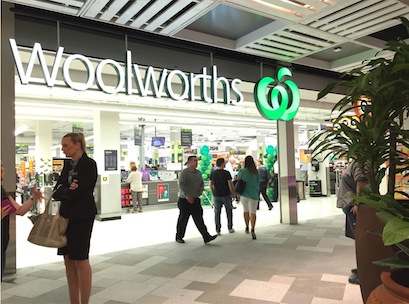 Last weeks announcement by Woolworths to close certain supermarkets and to grow their network more slowly will have implications for some property owners, according to Andrew Quillfeldt, JLL’s associate director of Retail Research.
Last weeks announcement by Woolworths to close certain supermarkets and to grow their network more slowly will have implications for some property owners, according to Andrew Quillfeldt, JLL’s associate director of Retail Research.
According to JLL, neighbourhood shopping centres currently account for the largest share of projects on the three-year forward pipeline at 41 per cent, although some projects in the neighbourhood centre pipeline may be deferred or cancelled following the announcement by Woolworths to slow their development program. Regional makes up 26 per cent of the three year pipeline and sub-regional accounts for 21 per cent, followed by bulky goods at 16 per cent and CBD at just 16 per cent.
“However, over the medium to long-term, the implication of lower levels of new neighbourhood shopping centre supply will be positive,” Quillfeldt said.
He said existing centres will become more productive as the population continues to grow, particularly in Melbourne, which has the highest level of population growth nationally.
Meanwhile, retail landlords in Sydney and Melbourne have enjoyed positive rental growth, reflecting stronger local economic conditions and population growth, while other markets remained stable or recorded slightly negative growth, according to JLL’s Q2 2016 Retail Research.
The property firms research found the last two years have been positive for retail, in terms of retail spending growth, but it hasn’t translated into a meaningful recovery in the overall retail property market fundamentals such as vacancy rates and rents.
“The latest research figures showed that from a national perspective average retail rents were unchanged across the three core shopping centre formats of regional, sub regional and neighbourhood. However, we did record positive annual rental growth in the CBD and bulky goods sectors of 0.5 per cent and 1.1 per cent in Q2,” Doherty said.
The average national vacancy rate increased slightly from 3.9 per cent in December 2015 to 4.2 per cent in June 2016. A slight increase was recorded across regional and sub regional centres over the same period while the CBD retail vacancy rate increased from 6.3 per cent to 7.0 per cent.
Doherty said market conditions are likely to soften slightly in the next few months as the effect of retailer discounting impacts margins.
“However, there are plenty of reasons to remain optimistic about the outlook for retail,” Doherty said.
“The fundamental drivers of retail spending are being supported by the fact that we have persistently low interest rates, households are in a relatively strong financial position and there continues to be above average levels of employment growth nationally.”
According to Doherty, from a leasing market perspective, competition between retailers is high.
“Major international fast fashion retailers are expanding around the country, while domestic specialty retailers are generally steady in terms of their store networks. Retailers continue to review stores carefully and are taking the opportunity to move to more productive locations as leases expire. Centre management teams have also been very proactive in adjusting the tenant mix to create the best possible offering within the increasingly competitive retail market,” he said.
Access exclusive analysis, locked news and reports with Inside Retail Weekly. Subscribe today and get our premium print publication delivered to your door every week.





